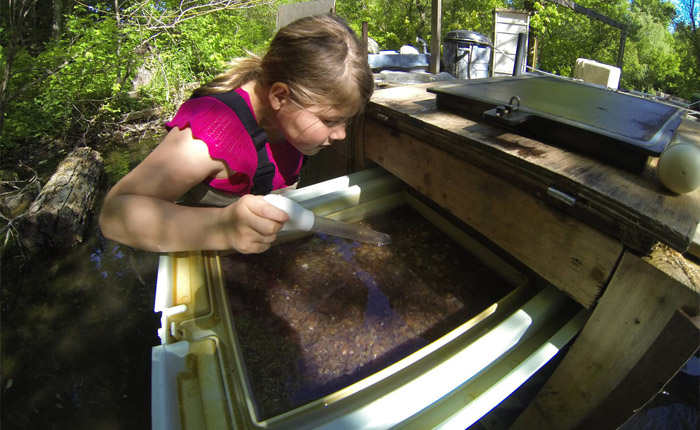About the Hatchery

CRAA has been raising fish for the Credit River since 1994. Since that time CRAA has stocked several million trout and salmon into the Credit River to improve fishing. Joe Ward, CRAA’s volunteer hatchery manager leads a team of 10 volunteers who volunteer every day of the year at the hatchery to better your fishing!
At the present time CRAA is targeting the following fish production in our hatchery:
Steelhead – 50,000 yearlings each year collected from wild Credit River strain steelhead.
Brown trout – 30,000 yearlings each year from either wild Credit River browns captured at Streetsville or from MNR hatchery brood stock.
Atlantic salmon – 10,000 yearlings from MNR supplied advanced fry.
Steelhead Eggs are collected by CRAA volunteers at the Streetsville Fish Ladder (see the Fish ladder page for more details) where the eggs are fertilized and water hardened for the hatchery. After being disinfected the eggs are placed in the hatchery until the fry are hatched. Egg collection occurs in late March through April. Eggs hatch in late May and fry are feeding in early June. Fry are kept until the fall or following spring and released into the Credit River under MNR direction.
Brown trout eggs are collected in October-November from the Streetsville fishway by CRAA volunteers. Extra eggs are provided by MNR if needed. These eggs hatch in January and fry are feeding in February.
Atlantic salmon are delivered as fry in early May and we raise them to yearlings and stock them in late fall or early the following spring. Atlantic salmon are a native salmon to the Credit River and are protected under the Endangered Species Act.
CRAA is also looking at opportunities to expand the hatchery program to help other stressed or threatened species. CRAA is discussion options to stock brook trout (to reestablish larger native strains that have been compromised due to past intense stocking in the 1950’s-70’s), lake sturgeon and Pacific salmon (coho and chinook).
The eggs are maintained daily by trained volunteers. Dead eggs (which turn white) must be removed every few days to prevent fungus from spreading in the hatchery. This is a slow process, using a turkey baster to suck each dead egg out without disturbing the live eggs.
Volunteers are needed 7 days a week, 365 days a year to maintain the hatchery, clean tanks, check on water flow and feed the fish. CRAA volunteers provide over 2,000 hours of service at the hatchery every year. These volunteers are working hard to make the Credit River a better place to fish!
Stocking the fry is done by groups of volunteers with coolers to spread out where the fish are stocked. Volunteers walk coolers loaded with thousands of baby steelhead down the rivers and creeks releasing a few dozen fry every few steps. The fry will then live in the stream for 18 to 24 months at which time they will head to Lake Ontario to grow into large steelhead and return to the river to spawn.